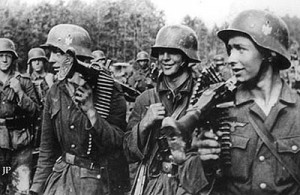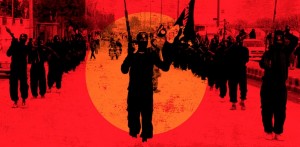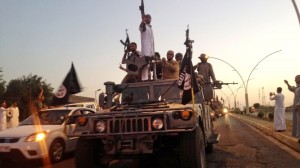ISIL conquered a large amount of territory in June 2014, scattering Iraqi troops and startling the world. Its fighters were the best in the region, perhaps the best the region has seen in centuries. However, after their impressive offensive they were overextended and outnumbered.
Since then, they have suffered setbacks in Kurdistan, Kobane, Sinjar, and most recently at Ramadi. Arab and Kurdish troops are besieging Mosul now, with an offensive likely in a few months. ISIL is learning that it cannot mass troops without exposing them to the formidable airpower of the West, for which it has no defense.
ISIL retains effective combat troops. Its commanders are not all zealots. It has options.
Status
ISIL has suffered high casualties in the major battles mentioned, from airstrikes and in scores of battles along hundreds of miles of contested areas. Precise numbers on casualties are naturally elusive, as they are for replacements coming in from abroad.
High casualties can be hard on unit cohesion and morale. Friends and respected leaders are killed or badly wounded. Replacements do not always fit in. A string of defeats must have undermined the supreme confidence of mid-2014 when enemies fled before them and Baghdad and Damascus were in sight.
 This is not always the case, as Shils and Janowitz found in their famed study of the German army (“Cohesion and Disintegration in the Wehrmacht in World War II.” Public Opinion Quarterly 12 [1948]: 280-315). Wehrmacht combat troops remained highly effective despite years of high casualties and continuous defeats.
This is not always the case, as Shils and Janowitz found in their famed study of the German army (“Cohesion and Disintegration in the Wehrmacht in World War II.” Public Opinion Quarterly 12 [1948]: 280-315). Wehrmacht combat troops remained highly effective despite years of high casualties and continuous defeats.
Thus far we have no evidence of widespread desertions, discipline problems, or low morale in ISIL units. Troops in Ramadi fought to the last or skillfully exfiltrated once defenses broke.
Back to the underground
ISIL may prepare to continue the fight in lost areas, including Ramadi, Tikrit, and even Mosul if it falls one day. Its organizational talents clear, ISIL has likely already prepared for this.
Until it moved into Syria, then drove into northern and central Iraq, ISIL was an underground movement. It found willing allies in former soldiers and officers in Saddam’s army, disaffected Sunni tribes, smugglers, Salafist networks, and Baathists. They are still there, angrier than ever at Shia governance and the hard hands of Shia militias pressing into Anbar.
Suicide bombings and IEDs are weapons of choice. The ISIL underground can play for time, wearing down the frail Iraqi army, watching the Kurds attack each other. In time ISIL can present itself as defenders of the Sunni faith, fighting Shia oppressors and their Persian backers – and above all the Americans who overthrew Sunni government and humiliated them.
Stalingrad on the Tigris?
 ISIL has had time to build up defenses in Mosul, far more time than it had in Ramadi. Contractors have been ordered to construct defenses. There may be several thousand ISIL troops there with support from many locals. Mosul will prove much more difficult to take than Ramadi.
ISIL has had time to build up defenses in Mosul, far more time than it had in Ramadi. Contractors have been ordered to construct defenses. There may be several thousand ISIL troops there with support from many locals. Mosul will prove much more difficult to take than Ramadi.
A major, decisive battle may be about to unfold in Mosul in which ISIL faces superior numbers of Iraqi troops and Kurdish militias. ISIL may calculate that, fighting from fortified positions and enjoying greater morale, they can inflict a devastating defeat on their enemies and turn the tide of the war.
Alternately, given the apocalyptic thought guiding them, they may see a glorious defeat, a fiery end, that inspires the faithful around the Islamic world to arise, avenge the fallen of Mosul, and ensure their vision is attained. Aberrant and grotesque as it may appear to most, it will have a visceral response in many.
©2016 Brian M Downing
